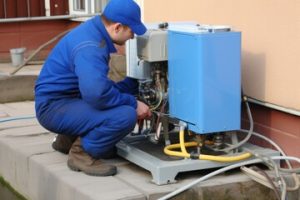
One of the most significant changes you can make to your kitchen without a full cabinet refacing is updating your hardware. A new set of knobs or pulls can elevate your cabinets and create a harmonious look in your space.
Cabinet Refinishing San Jose CA also helps minimize waste, as it uses existing doors and drawer fronts rather than replacing them with new ones. It also gives your kitchen a fresh look and covers up dents, blemishes, and discoloration.
Knobs
Cabinet knobs may seem like a minor design detail, but they can have a significant impact on your kitchen’s aesthetic. Whether you choose sleek, minimalist bar pulls or ornate ceramic knobs, the right hardware can elevate your entire kitchen’s look and feel.
For the ultimate in modern elegance, opt for sleek metal finishes like chrome or matte black. These modern styles create a clean, sophisticated look that pairs well with most appliance finishes. For a touch of whimsy, mix and match different metal finishes for an eye-catching, eclectic look. Just be sure to maintain balance and consistency when doing so to avoid clashes and a messy, unorganized appearance.
If you prefer a more traditional style, opt for a classic knob that adds timeless appeal to your kitchen. These options are versatile enough to blend in with any decor, from farmhouse to contemporary. You can also go for an eco-friendly option to enhance your home’s green lifestyle, with sustainable materials such as reclaimed wood or recycled glass.
While knobs provide a more subtle look, they also concentrate the force of pulling in a smaller area and can cause wear on the surface of your painted cabinet. For this reason, handles may be a better choice for larger drawers or heavier cabinets.
When deciding between knobs or handles, it’s important to consider your grip and ease of use as well as your budget. Knobs are typically more affordable, as they don’t require as much material or intricate designs. Additionally, they only require one screw, making them easier to install than handles.
While the idea of a major kitchen remodel may have you running for cover, it’s essential to consider your options and find the best solution for your home. While a complete replacement is a costly and time-consuming process, cabinet refinishing offers a cost-effective alternative that can give your existing kitchen a new lease on life. By focusing on the doors and drawer fronts, this transformative makeover allows you to get the look of a full kitchen renovation without the hassle. With the right cabinet refinishing process and hardware, your dream kitchen is just around the corner.
Pulls
Cabinets are storage spaces that hold utensils, pots and pans, kitchen or bathroom items. They have doors and drawers to allow for access. Most cabinets also have shelves for storing things like canned goods or dishes. Cabinets are usually made of wood or another material that is durable and easy to clean. Cabinet hardware is essential for ensuring that the doors and drawers open and close properly. Cabinet knobs and pulls come in a variety of styles, colors, materials, and finishes to match any design style.
Typically, cabinet hardware is chosen to match the overall color scheme of the space. For example, brushed nickel pairs well with white or light gray cabinets for a modern and clean aesthetic. For more of a bold statement, chrome is a popular choice for dark gray or navy cabinets, adding a touch of high-contrast sophistication to the room.
Refinishing is a great way to give your cabinets a fresh new look without the cost and hassle of replacing them. By refinishing, you keep your existing cabinet boxes, doors, and drawer fronts while applying a new stain or paint finish. Refinishing takes less time than a complete replacement and can be performed in just a few days to a week.
Cabinet refinishing requires expert craftsmanship to ensure the results are flawless. At Cabinet Cures, we use a thorough surface preparation process that includes sanding and the application of multiple coats of stain or paint to create an even finish. We also use stain-blocking primers to prevent bleed-through, which can happen when dark-grained areas or tannins are present in the wood.
One of the biggest advantages of working with a professional is their speed and efficiency. By using their years of experience, they can make the process run smoothly and get your cabinetry back in service sooner than you would have thought possible. This helps minimize the disruption to your daily life so you can enjoy your newly refinished cabinetry as soon as possible.
Brackets
Cabinet hardware ties your kitchen together, bringing style and function to the room. Beyond their aesthetic value, knobs and pulls keep your drawer and cabinet fronts cleaner by reducing the build-up of oils, food particles, and moisture. They also make it easier to open and close cabinets, making your kitchen more efficient. And they give bare cabinets personality, adding a unique touch that reflects your personal taste.
With a little bit of thought, selecting the right cabinet hardware for your home can be an easy way to elevate your kitchen’s look. However, matching the perfect color and pull style isn’t always as easy as it seems. The right colors, lighting, and even your own personal preferences can have a huge impact on the look you get.
To help you select the best pulls for your new kitchen, here are some cabinet hardware ideas to consider:
Trending Cabinet Paint Colors
A quick look at pinterest boards or Instagram photos will tell you that white is the current go-to color for cabinetry. But if you’re looking for something with a little more warmth, try a rich khaki or gray. You can still keep the room light with a bright white trim, but the darker color adds contrast that makes the cabinets pop.
Another popular trend we’re seeing is the use of metallic glazed finishes on cabinets. These are great for adding a pop of color to a neutral kitchen and come in many different hues. The best thing about this finish is that it’s durable enough to withstand everyday wear and tear, so it will look like new for years to come.
If you’re not ready to commit to a full replacement of your cabinets, refinishing is an alternative that’s less expensive and more DIY-friendly. During a refinishing project, the existing cabinet boxes and frames remain in place but are refreshed with a new stain or paint. Refinishing is also quicker than a full replacement and reduces the amount of time your kitchen is in disrepair.
Handles
Cabinet handles are an important aspect of door and drawer operation, and they play a key role in defining the style of your kitchen. They come in a wide range of shapes, lengths, and styles to suit any aesthetic. In addition, handles offer a secure grip and greater leverage when opening, making them ideal for lower cabinets and drawers that hold heavier objects. They’re also a great option for households with young kids or seniors who may struggle to open knobs with their fingers.
Cabinet hardware trends are always changing, and you have a variety of choices when it comes to color and finish. You can go with a modern metal bar, classic ornate knobs, or even window-sash-style pulls to add a touch of vintage flair to your kitchen design. Whatever your personal style, it’s important to consider how the cabinet handles you choose will work with the rest of your home and complement the finishes on your appliances.
There are two major cabinet remodeling options that homeowners can undertake to refresh their kitchen or bath: refacing and refinishing. Refacing involves removing and replacing the existing cabinet doors and drawer fronts, while refinishing uses staining and painting techniques to refresh the existing wood structure of the cabinet box and framing. Refinishing is less expensive than refacing and requires less demolition, making it a smart choice for budget-conscious homeowners who still want to upgrade their cabinets.
During the refinishing process, you’ll have the option to choose from a variety of coat finish options including varnish, wax, or paint. Each one impacts the final look and durability of your finished project. It’s crucial to use a professional who understands how each type of finish works, as well as the advantages and disadvantages of each.
The CCFF team utilizes high-quality products and professional refinishing techniques that deliver a flawless, showroom-quality finish. We’re able to complete the majority of our work at our cabinet refinishing shop, rather than in your home, reducing the environmental concerns and fumes that can disrupt your daily life during an extended kitchen remodel.

